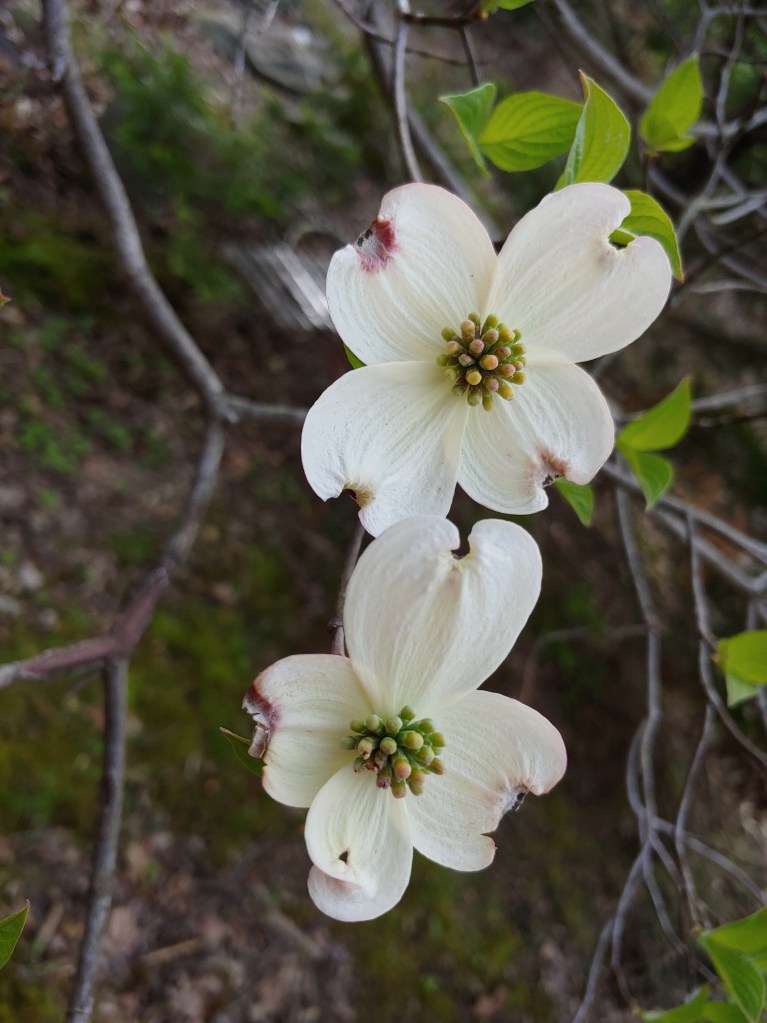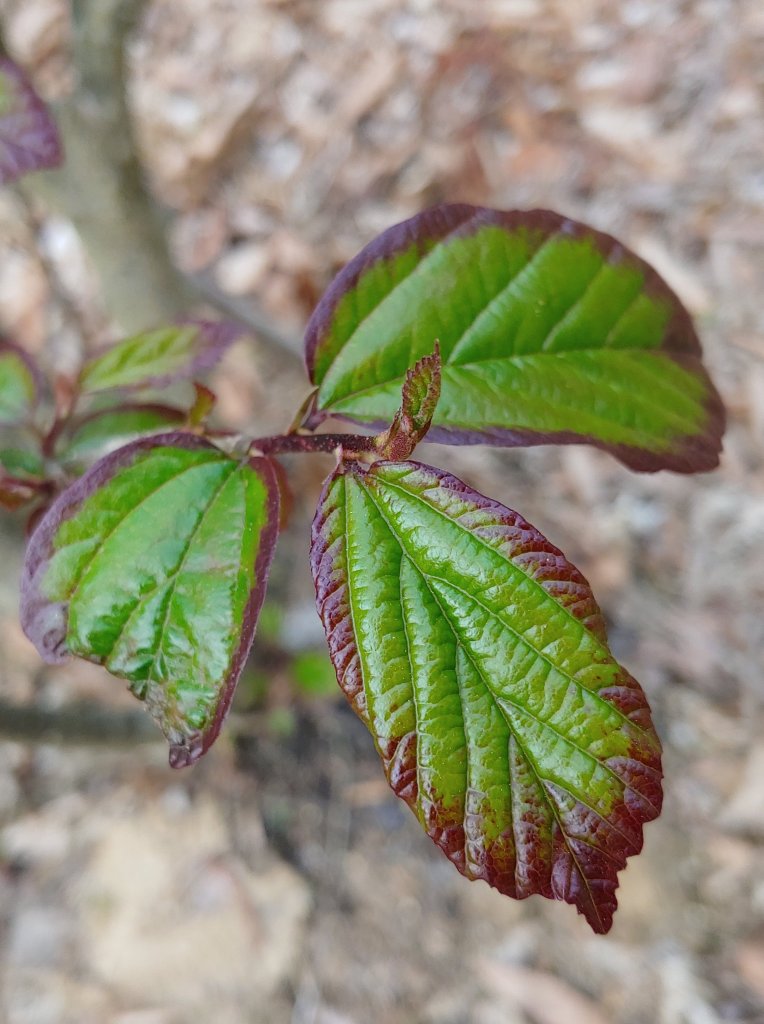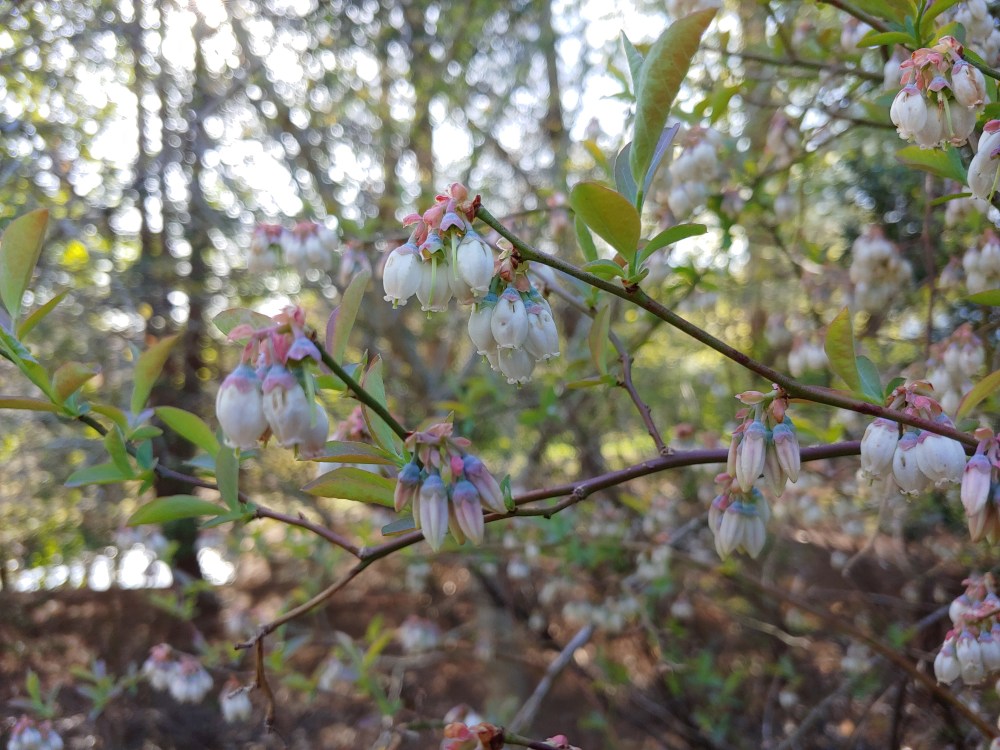The weather rollercoaster is not unusual for spring, though a recent coating of snow is out of the ordinary for mid April. Periods of mild temperatures have been interrupted by scattered freezes, and it is fortunate none have dropped low enough to do much damage to emerging leaves. Yes, every new set of camellias flowers has turned brown after a few days, but flowers are short lived and most importantly none of the gardens plants have suffered any long term injury.

I worry most about new leaves on Japanese maples, and there’s been a bit of short term wilting after each freeze, but I don’t think this has amounted to any more problem than the loss of a leaf or two. I am pleased that the green linearilobum maple (Acer palmatum ‘Scolopendrifolium’, above) that was badly damaged two years ago has finally come back in full. Once leaves are lost in a late freeze a long established maple will grow back about half its leaves the first year, and sometimes the tree doesn’t fully rebound for several.

The dogwood (Cornus florida, above) in the front garden has long suffered spotting and mildew issues (and canker, and what else is there?), and in recent years flowers have been blemished. Several branches were lost in the clinging snow of early January, but the tree has survived every other problem over three decades so I don’t expect anything different. The dogwoods in the rear garden, one a native at the forest’s edge, have no issues.

A favorite spring flower, Carolina silverbell (Halesia carolina, above) is flowering at the forest’s edge. In this shaded spot it branches loosely and grows tall but the shade does not seem to diminish its flowering, except that the lowest flowers are now almost beyond my reach. Still, the blooms are best viewed from our kitchen window, where flowers can be seen head to toe.

I am very pleased that the ‘Persian Spire’ ironwood (Parrotia persica ‘Persian Spire’, above) is leafing fully, and of course the dark leaf margins are glorious. This ironwood was initially planted in ground that proved too damp, with the tree barely growing over several years and losing many of its leaves by early summer. When a new raised bed planting area was dug this seemed a perfect spot for the broadly columnar tree.

In the damp, lower rear garden several blueberries (Vaccinium corymbosum, above) grow in slightly damp soil, and happily for neighborhood birds the flowers were not damaged by freezes. The shrubs were rescued from overly damp ground where they were nearly lost after years of providing fresh pickings as I roamed the garden. They are now in a bit too much shade, growing tall and thin, but this does not diminish the crop of berries, though they most are now out of reach and so left for birds that find them the moment they ripen.
Should we be concerned about the predicted 34 degree weather this week? Specifically I assume we should still hold off from planting annuals in pots outside but that perennials are okay to plant? Thanks.
I’ve jumped ahead and planted several annuals and don’t expect it to be a problem, but it’s best to plant after the threat of frost.
Hey Dave…
Is there any way to propagate a red dogwood — not to be confused with red twig dogwood.
I’ve always heard you can’t propagate pink ones (they come out white), but wasn’t sure if red was viable.
I’m moving soon and would LOVE to take a piece of my beloved dogwood with me.
Red and pink dogwoods are propagated by grafting since they would not come true from seed. I’m not aware of any that are propagated by rooted cuttings although this could be possible. Whether by grafting or rooting, a pink or red dogwood is then a clone of the parent tree, so it must have the flower color of the parent.
We are fixing up our front lawn landscaping and were hoping to have it finished by this weekend as we have family visiting (our lawn is currently a dirt pile!). We purchased ice cap roses and butterfly bushes and were planning to plant today but I’m worried with the weather tonight and this weekend. Should we hold off? Any tips?
Tender new growth could be a problem with temperatures nearing freezing tonight. However, the growth of many shrubs has been out for several weeks and this is unlikely to be damaged unless temperatures drop into the low to mid twenties. I would avoid planting today, but starting tomorrow the weather looks fine.